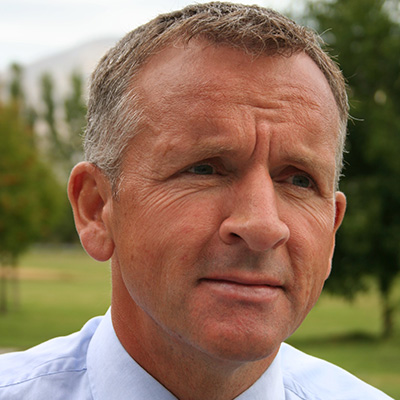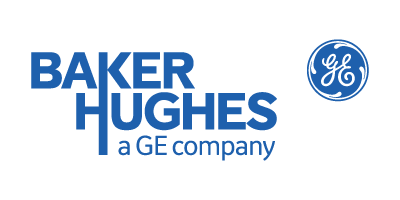17 August 2017
Interview with Stephen Donovan, Global Wind Sales Leader, Baker Hughes, a GE Company

Can you tell our readers a little about your organisation?
GE Controls and Condition Monitoring is a part of Baker Hughes, a GE company (BHGE). GE has long been known for its industry-leading critical machine protection technologies and condition-monitoring solutions for industrial markets. Building on 50 years of experience, we have leveraged and applied this knowledge into products and services for emerging markets, such as wind.
Being part of the larger BHGE organization provides global reach into every continent as many of our customers themselves are global power generation companies. Europe is an extremely important market for wind and also for BHGE, as the wind industry originated in Europe and therefore has a level of maturity, experience and uniqueness.
While in North America average wind farms may be larger and enjoy higher economies of scale, European wind farms are smaller and therefore need to be more nimble and agile to be efficient. This drives technology and capabilities which benefit the global wind industry as a whole. One example is the offshore wind market, where some 88% of the total global offshore market is implemented in Europe.
Many of the largest turbine OEMs have manufacturing facilities, technology centres and R&D in Europe which we collaborate with. Germany, Denmark, Spain and the UK were initially the primary markets; however, this is expanding significantly as wind energy is becoming an accepted cost-effective alternative to fossil fuels.
BHGE provides vibration-based condition-monitoring solutions (CMS) to the wind industry.
As the MW class turbines started to emerge in the last decade, early adopters – primarily owner operators who had experience of the benefits of CMS in other power generation markets – started to retrofit their wind turbines with CMS. As the benefits became more widely recognized, CMS is now seen as an integral part of any owner operator maintenance regime.
In fact it is now commonplace for many of the turbine vendors to embed CMS into the design and manufacture of their turbines. As turbines become even larger and the cost of unplanned failures proportionally increases, we envisage CMS will be mandated by the industry.
We work with many owner operators, turbine and major component vendors throughout Europe. BHGE’s CMS solution can be integrated into any vendor turbine, to include, Vestas, GE, Suzlon and Siemens Gamesa to name but a few.
What are the most exciting developments you have seen in the wind industry?
Significant progress has been made in the wind industry in making the transition towards becoming a subsidy-free competitive alternative to fossil fuels. This has been driven by technological improvements which have delivered major capital cost reductions, but also by increasing capacity factors, all of which have contributed to a reduction in LCOE.
Personally, I’m most excited by the digital transformation and the intelligent wind farm. The emergence of the internet has touched and transformed all of our lives. I foresee the industrial internet being the next major step.
The proliferation of data, and the ability to analyse and leverage it to improve efficiency, will become increasingly important as we see the evolution of other technologies such as the smart grid and the way in which we consume energy.
What changes would you like to see in the wind industry?
Political stability that allows for strategic investment and legislation to develop projects and technologies to expand and accelerate the growth of the wind industry.
While initially it was important for subsidies, considerable uncertainty around the tapering of production tax credits (PTC) in the US and removal contracts for difference (CFD) in the UK is making it difficult for manufacturers, developers and owner operators to plan and invest.
Notably, there has now been significant investment from institutional investors and more recently from corporate investors, such as Amazon, Google, Walmart, who are contracting their own windfarms to provide predictable energy at an affordable and competitive cost.
This suggests a level of maturity within the wind market. However, without political support it will reduce the pace at which the industry can grow.
Going forward, what role do you see your organisation playing in the future development of wind energy?
As the digital windfarm becomes more widely adopted, BHGE will extend its condition-monitoring expertise to enable the industry not only to improve the reliability of turbines, but also to influence and to introduce the methods and best practices for increasing cost efficiency and risk mitigation in maintaining wind turbines.
Early adopters are already starting to transition from the traditional time-based maintenance method to Asset Performance Management (APM). APM will provide a higher level of optimization that will increase reliability, reduce costs and mitigate risk.
We will leverage more than 50 years of experience providing mission critical protection solutions in other industries towards the wind industry.
If we look ten years ahead, what do you hope to have achieved?
Personally I would like to think BHGE and our digital industrial solutions will have contributed significantly to increasing the reliability and availability of wind assets. And that this will have in some way reduced reliance on fossil fuel power generation.
There is now significant momentum to reduce our carbon footprint. Not only does wind energy need to be meeting these environmental challenges, it needs to do so in a financially viable manner.
If we can drive the wind industry on a viable cost basis, with the enormous environmental benefits of carbon reduction, I believe we will achieve a transformational vision that will affect all of our lives for generations to come.
To learn more about how you can reduce both operating cost and risk to achieve a lower LCOE, please join BHGE’s webinar on Condition Monitoring for the Wind sector with Renewable Energy World on 22nd August 2017. To register please click here


